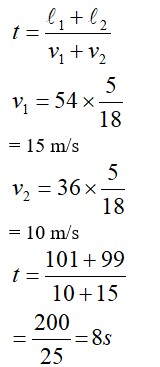3.6 A car moving along a straight highway with speed of 126 km h–1 is brought to a stop within a distance of 200 m. What is the retardation of the car (assumed uniform), and how long does it take for the car to stop?
3.6 A car moving along a straight highway with speed of 126 km h–1 is brought to a stop within a distance of 200 m. What is the retardation of the car (assumed uniform), and how long does it take for the car to stop?
-
1 Answer
-
3.6 The speed of the car = 126 kmph = (126 * 1000/3600) m/sec = 35 m/s
From the relation V2 = U2 + 2fs, where Final velocity V = 0, U = 35 m/s, s = 200m, we get retardation, f = -U2/2s= 3.06 m2/s
From the relation V = U – ft, we get t = U/f = 35/3.06 = 11.42 s.
Similar Questions for you
Please find the solution below:
[h] = ML2T-1
[E] = ML2T-2
[V] = ML2T-2C-1
[P] = MLT-1
According to question, we can write
10 =
Average speed
(d) Initial velocity
Final velocity
Change in velocity
Momentum gain is along
Force experienced is along
Force experienced is in North-East direction.
Taking an Exam? Selecting a College?
Get authentic answers from experts, students and alumni that you won't find anywhere else
Sign Up on ShikshaOn Shiksha, get access to
- 66k Colleges
- 1.2k Exams
- 680k Reviews
- 1800k Answers



